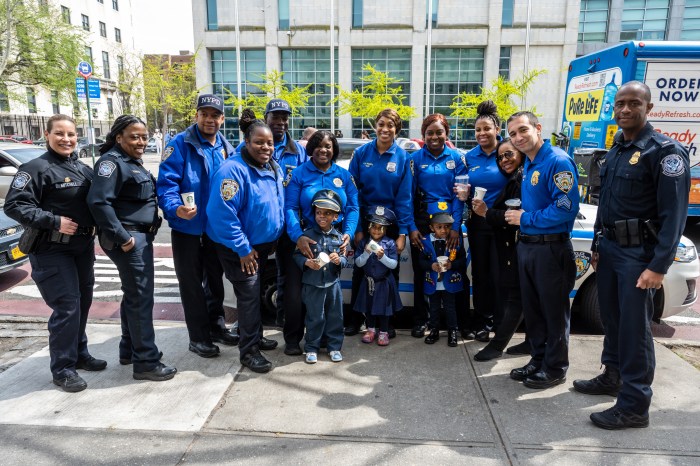Guy Pierno is 25 to 30 percent busier these days. The reason? Potholes.
Pierno, of D&H Auto Body on Atlantic Avenue in Richmond Hill, told The Courier that he has “seen an increase in wheels being bent.”
“In my own travels down Jamaica Avenue and even on the Belt Parkway, I notice it’s all chewed up,” he said.
From a few hundred to well over a thousand dollars, the cost to replace a wheel depends on the make and model of your car.
“The bigger the wheel, the more money,” said Pierno, noting that the repairs are usually not covered by insurance, as the cost is sometimes lower than a deductible.
The transition from winter to spring wreaks havoc on the roads. In the first week of March, City of New York crews filled more than 24,000 potholes, including 6,000 in Queens, according to Monty Dean, Assistant Press Secretary for the New York City Department of Transportation (DOT).
In fact, Mayor Michael Bloomberg, along with DOT Commissioner Janette Sadik-Khan, helped to fill his administration’s two millionth pothole, on Staten Island, on Thursday, March 4.
The Mayor said heavy rainfall last summer paired with record snows this winter placed “enormous stress on our roads,” resulting in an increase in the number of potholes across the city.
However, it is no secret that potholes themselves place enormous stress on motorists – and their vehicles.
Robert Sinclair Jr., AAA New York’s manager of media relations, said his organization has seen an uptick in the number of phone calls regarding run-ins with potholes.
AAA does not track the cause of damage to a motorist’s vehicle so it has no hard data on pothole-related accidents. But Sinclair Jr. knows those asphalt abysses are out there.
“I live in Queens and it seems we have a bumper crop, so I keep them in mind,” he said.
In addition to keeping track of potholes “so you can avoid them on your daily commute,” Sinclair Jr. said AAA also recommends that drivers:
• Maintain proper air pressure in a vehicle’s tires. “What happens when you strike the pothole is it’s the far edge that does the damage. Just falling into a pothole is not the problem,” Sinclair Jr. noted. An under-inflated tire can lead to wheel and rim damage after it is punctured.
• Do not tailgate. “That way you can see the pothole emerge from under the vehicle in front of you and have time to react.” Also, watch the vehicle ahead of you to see if it brakes or swerves, he said.
Sinclair Jr. added that if a motorist has collision coverage and hits a pothole, he or she can usually collect repair fees from insurance “because, technically, it’s a collision with the road.”
AAA’s advice, which it prints in its magazine and posts on www.aaa.com, is all well and good, but what if a pothole is unavoidable and collision insurance is just not in the picture?
Fortunately, within the New York City limits, motorists may be entitled to financial reimbursement for repairs following a pothole incident.
The City Comptroller’s office, which handles cases of pothole collisions, directs motorists to its automobile property damage claim form, available at www.comptroller.nyc.gov/bureaus/bla/claim_forms.shtm.
Once filled out, the form should be mailed to:
Office of the Comptroller
c/o Claims
1 Centre Street, 12th Floor, Room 1200
New York, NY 10007
Additionally, motorists can be proactive and report potholes by calling 3-1-1. So far in fiscal year 2010 – which began July 1, 2009 – the city has received more than 32,000 such complaints.
The city also boasts a Street Conditions Observation Unit (SCOUT), tasked with monthly inspections of every street in the five boroughs. This fiscal year, SCOUT has reported almost 6,000 potholes.
Once identified, city crews working 10-hour shifts fill up to 4,000 potholes per day. The speed of pothole repair is tracked on the Citywide Performance Review system, and in January, the last month reported, it took the city an average of 1.4 days to repair a pothole – one of the fastest times on record, according to the Mayor’s office.
Since July, 200,000 citywide potholes and 50,000 in Queens have seen their demise, thanks to the city’s pothole restoration program.
Still, Pierno said, “I try to drive as carefully as possible.”
– With additional reporting by Tonia N. Cimino































